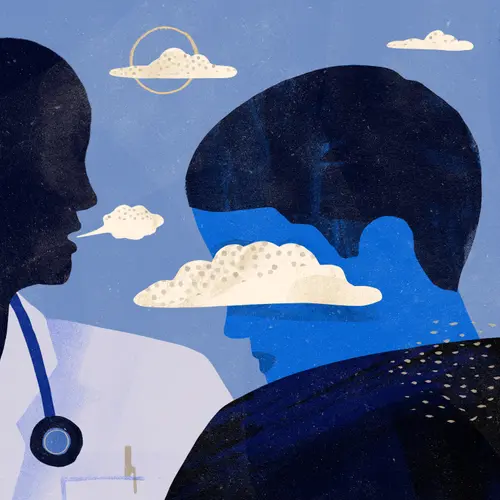Warm sunshine feels good on your skin. Could a machine that beams rays of light similar to those that come from the sun actually treat health problems?
Yes. It’s called phototherapy, or light therapy. It uses ultraviolet rays to treat:
- Skin diseases like psoriasis, eczema, dermatitis, or vitiligo
- Skin cancers like cutaneous lymphoma
- Moderate to severe acne vulgaris
- Skin wounds from injury or diabetes
- Jaundice in babies
- Mental health conditions like depression, sleep problems, or seasonal affective disorder (SAD)
How Does Light Help SAD and Depression?
Seasonal affective disorder happens around the same time each year. It usually starts in late fall and ends in the spring. The lack of natural light could make you more likely to get depressed. If you are, you might notice these symptoms:
- Low mood most of the day
- Fatigue
- Eating more
- Sleeping more
- Weight gain
- Irritable
- Hard to get along with others
- Heavy feeling in your arms or legs
- Suicidal thoughts (in extreme cases)
Scientists don’t fully understand how light therapy affects your mood if you have SAD. But we do know that bright light kick-starts an internal clock in your brain that controls certain biological rhythms (you might hear them called circadian rhythms) over the course of a day. One function of that brain clock is to manage your mood.
What Devices Are Available?
You can choose from tabletop sunlamps or light boxes that put out a wide arc of light. They’re different from light boxes used to treat skin conditions -- they put out very little UV light. But they aren’t regulated by the FDA or approved for SAD treatment. That means your doctor can recommend one, but they can’t write you a prescription. Most insurance won’t cover the cost.
Look for one that:
- Provides exposure to 10,000 lux of light (A lux is a unit of illumination.)
- Puts out as little UV light as possible
For the best results:
- Use the light box in the morning for about 20 minutes.
- Sit so the light hits your face.
- Don’t stare into it -- you can read, watch TV, use the computer, etc.
- Start in the fall and keep going until spring.
How Does Light Help Skin Conditions?
Phototherapy helps your skin make more vitamin D, which can ease inflammation, fight skin tumors, and help wounds heal. It helps your skin fend off bacteria that cause disease. It can heal chronic skin conditions like eczema, or just calm them down for a while.
Phototherapy treatments use different kinds of light. Ultraviolet A (UVA) and ultraviolet B (UVB) rays can calm inflammation and soothe itchy skin. Narrowband UVB light is the most common eczema treatment.
Some phototherapy treatments use only blue-green light rays, not ultraviolet light. Blue-green rays can help babies with jaundice. They break up a substance in their blood called bilirubin that makes their skin or eyes turn yellow. Once the extra bilirubin is blasted into smaller bits, the baby’s body can absorb it and the yellow goes away.
What Devices Are Available for Skin Conditions?
You can get treatment at the hospital, your doctor’s office, or a clinic. You can also do it at home with lamps or handheld devices your doctor prescribes.
Phototherapy devices include:
- Hand-held lamps that beam light at one or a few areas of your skin
- Units that treat your hand or foot with a small tunnel of light
- Booths or large panels that beam light at your whole body
- Combs that treat scalp psoriasis by sending ultraviolet rays through your hair onto your scalp
- Excimer lasers that send a high-intensity beam of UVB light to small areas of your skin
PUVA and PUVB mix light treatment with psoralens, plant products that help your skin absorb light rays. PUVA, which mixes UVA light with psoralens, helps treat severe psoriasis or other skin diseases. You can swallow the psoralen or apply it to your skin in a bath. PUVB mixes psoralen treatment with UVB light, but it’s rarely used.
What to Expect
You’ll need a series of phototherapy treatments for it to do any good. Whether you have them in a doctor’s office, a clinic, or at home, a consistent schedule will give you the best results.
Your skin may feel a little worse at first. It might be red or itchy after a treatment. If phototherapy causes your skin condition to flare, your doctor can cut the amount of light.
Only use the phototherapy your doctor prescribes. Don’t try tanning beds, tanning salons, nonprescription sunlamps meant for tanning, or natural sunlight. You could damage your skin or boost your odds of skin cancer.
Some topical drugs used for psoriasis, eczema, or dermatitis rashes could make your skin more sensitive to ultraviolet light or sunlight. Talk to your doctor before you try phototherapy if you use any topical medications.
Don’t use phototherapy if:
- You have any disease that makes your skin sensitive to sunlight, like lupus, xeroderma pigmentosum, or some types of melanoma
- You take any drugs that make you more sensitive to the sun
Talk to your doctor if you’re unsure about phototherapy’s safety.

